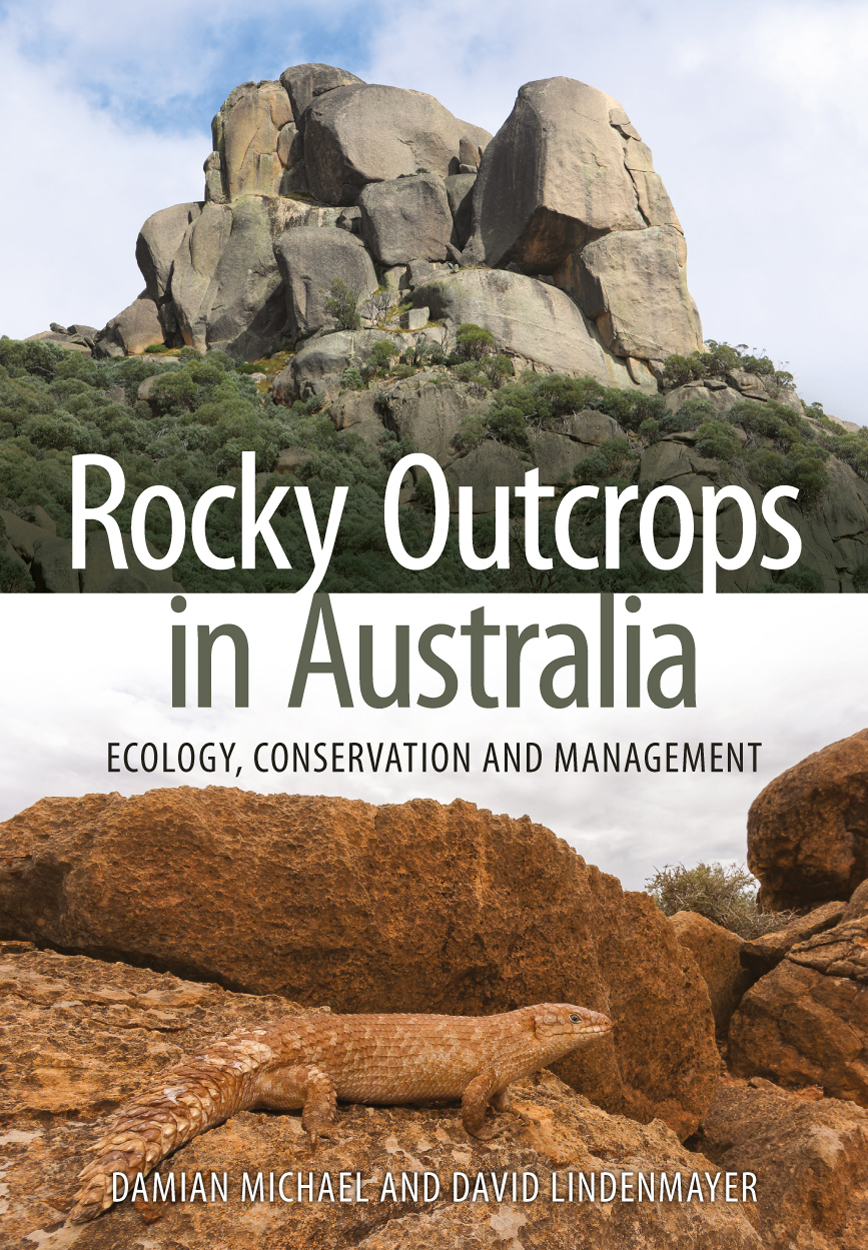one of the objects of geology – records preserved in the great stone-book of
nature” J. Milne Curran (1989). And so, begins our journey into better understanding rocky outcrops, an
ecologically significant and charismatic part of the Australian landscape.
geological foundations that have formed the vast diversity of rocky outcrops that
occur throughout the landscape. The reader requires no previous knowledge of rock types or formations, but is provided with a comprehensive background in the basic geologies that make up these ancient
landforms and fragile ecosystems within the first few pages. I particularly like the insets that provide snap-shots including detailed and relevant examples of: unique rocky outcrops; protected, historically and culturally significant rocky outcrops; rare and threatened fauna that rely on these
formations; and management techniques and case studies on private and public land.
As an ecologist with a keen interest in herpetofauna (reptiles and amphibians), I was particularly interested in reading more about the various saxicolous fauna i.e. animals that specialise, or are dependant, on rocky outcrops to survive. There is a great amount of detail on microhabitat preferences and species specific habitat preferences that are unique to fauna dependant on rocky outcrops. Identifying these often rare and threatened species and their habitat preferences highlights unique difficulties in land management that are often associated with rocky outcrops on both private and public land.
The management and conservation advice defined in this book, highlights our broad-scale impact as land managers in an ever-changing landscape. Several Land for Wildlife members in the Moreton Bay Region and greater SEQ have rocky outcrops and features present on their properties. This book identifies management and conservation advice that may assist land managers to successfully manage these biodiversity hotspots. If nothing else, it provides us all with a glimpse of the unique and little known world that lies within these sometimes vast and seemingly inhospitable places.

illustrations. 184 pages. RRP: $49.95
Available from CSIRO
Publishing or select online
and in-person book stores.

Very useful review – thanks! The review helped me decide that, yes, I will add this book to my overflowing book collection :). I live in an area of Victoria with lots of rocky outcrops and am interested in learning more.